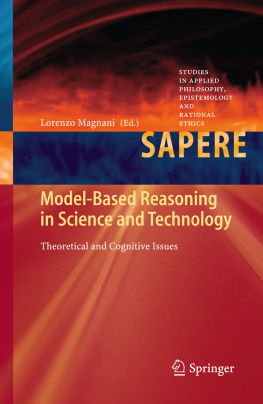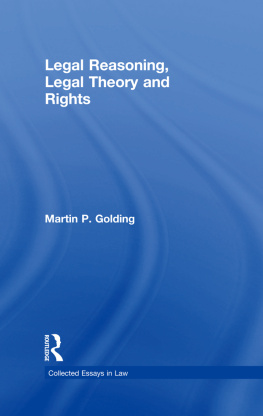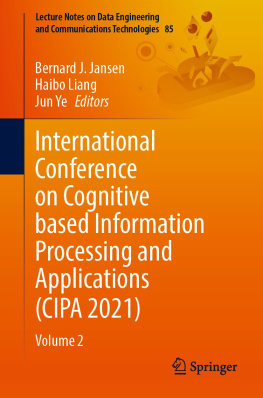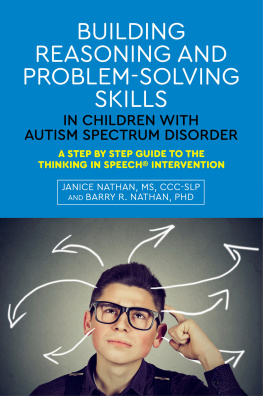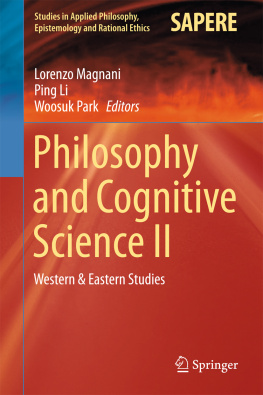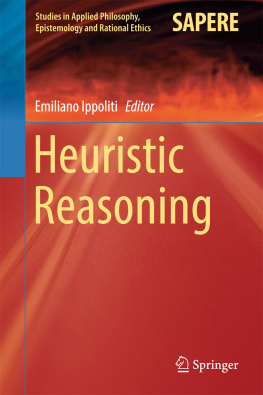Lorenzo Magnani (ed.) Studies in Applied Philosophy, Epistemology and Rational Ethics Model-Based Reasoning in Science and Technology 2014 Theoretical and Cognitive Issues 10.1007/978-3-642-37428-9_1 Springer-Verlag Berlin Heidelberg 2014
Some Ways of Thinking
How do we think? One of those questions that elicits shoulder-shrugs. There are the simple knee-jerk answers: with our brains, or, in words. But theres more to thinking than that. Here Id like to show, and Im by no means the first, that we have other ways of thinking. That we take our thoughts out of our minds and put them into the world. Of course we do that every time we talk. But when we talk, we dont just use words, we use the prosody in our words, a bit of which can negate what the words seem to say. When we talk, we use our bodies, our faces, our hands. We use things in the world, pointing to them, arranging them, manipulating them. We use proxies for things in the world, looking toward or pointing to empty places that represent them, where they might have been. Similarly for thinking, which, after all, is communicating with our selves. We think with our hands and our faces and our bodies. We think with the marks and the arrangements of marks we make on paper and the things and arrangements of things in the world. You might counter, but all that goes through the brain. Of course, nearly everything goes through the brain. Eating goes through the brain, from the biting and chewing onward. As does walking. Nevertheless, we dont say we eat or walk with the brain.
Perhaps some experiments, thought experiments as well as laboratory ones, will make the case. One of the many reasons for putting our thoughts into the world is the limitation of memory. We make to-do lists, set buzzers and timers, put the shoes that need new soles by the door to remember to take them to the cobbler. In this we are in good company with the rulers of empires who inscribed their accomplishments in stone, often in depictions, not for themselves, but so that others would learn and never forget. Another reason is limits of information processing. Imagine computing the square root of a 4-digit number without paper and pencil. Imagine counting without pointing, and even moving the objects to be counted when their number gets large. When prevented from counting with our fingers, we count with our heads, or with our eyes (e. g., []. Sometimes that knowledge is embedded in the actions that produce it. If youre a touch typist, tell me where the keys for c or i are without moving your fingers. Touch typists typically cant do that without moving their fingers. The brain needs the actions of the fingers to find where the keys are in space.
Thinking with Paper . Putting ideas on paper is common practice for artists, designers, architects, mathematicians, scientists, and ordinary people. Designers refer to having conversations with their sketches (e. g., []. Intriguingly, the perceptual inferences typically depended on examining the given overhead viewpoint of the museum, but the functional inferences often depending on imagining a different viewpoint, from within the depicted environment.
To further understand the conversation with sketches, we brought the task into the laboratory, borrowing a paradigm of Howard-Jones []. In some experiments, we asked people to complete two measures of spatial ability, embedded figures and mental rotation, and a measure of associative thinking, the remote associates task. We counted the number of new interpretations each participant produced for each sketch, and then asked participants how they generated new interpretations.
Fig. 1
Four sketches used in experiments of Suwa and Tversky
What did we find? We found that professional designers and architects surpassed untrained participants in numbers of new interpretations of the sketches. We found that those who reported focusing on different parts or reorganizing the parts of the sketch produced more than twice as many new interpretations as those who didnt report that strategy []. We had already shown that finding new interpretations benefits from perceptual reorganization of complex visual stimuli. We found that mental rotation, a spatial skill requiring imagining objects at different orientations, was unrelated to number of interpretations. We found that those good at producing remote integrative associations, an index of fluid thinking, generated more new interpretations than those who had difficulties in that task. We found that the perceptual reorganization skill was uncorrelated with the associative thinking skill; they were independent of each other Producing interpretations of ambiguous sketches, then, relies on a perceptual skill, generating new organizations and patterns, and a thinking skill, producing a rich web of meaningful associations to those patterns. We proposed that people adept at interpreting and reinterpreting ambiguous sketches rely on a strategy that combines these skills, a strategy we called Constructive Perception, the deliberate and active use of perception in the service of innovative thinking. And we wondered if analogous processes underlie innovative thinking in other domains.
Drawing is used in other domains to sketch out ideas. One such domain is art. Although laypeople may view drawing as transferring what is seen to paper, artists who draw see that process as far more complex (e. g., []. In both cases, students knowledge was assessed immediately after the lesson. Then students in each experiment were divided into two groups. One group was asked to provide the typical verbal explanation of the bicycle pump or chemical bonding. The other group was asked to provide visual explanations of the same systems. After completing the explanations, student knowledge was tested again. Importantly, students improved on the second knowledge test simple from constructing explanations, without any intervening teaching. Impressively, students who created visual explanations improved more than those who provided verbal explanations. Examination of their explanations provides clues to the superiority of the visual explanations. They contained more information than the verbal explanations about the structures of the systems. This is to be expected because visual explanations map physical structure in space to the space of a page, a natural mapping, and one of the noted advantages of diagrams. More impressively, the visual explanations contained more information about function, about the operations and causality of the systems. Behavior and causality are harder to depict, and easier to convey in language, yet they were more frequently included in the visual explanations. The visual explanations used language as well as diagrams; the verbal explanations did not add diagrams. But the visual explanations went farther. Just as for artists and scientists, visual explanations provide a check for completeness and a check for coherence: are all the necessary parts there? Do they work together to produce the expected outcomes? The diagrams in the visual explanations provide a natural platform for inferring behavior, process, and causality from structure. Purely symbolic language, with no natural mapping from actual structure to the space of a page does not provide a natural, user-friendly platform for inference and thought.

